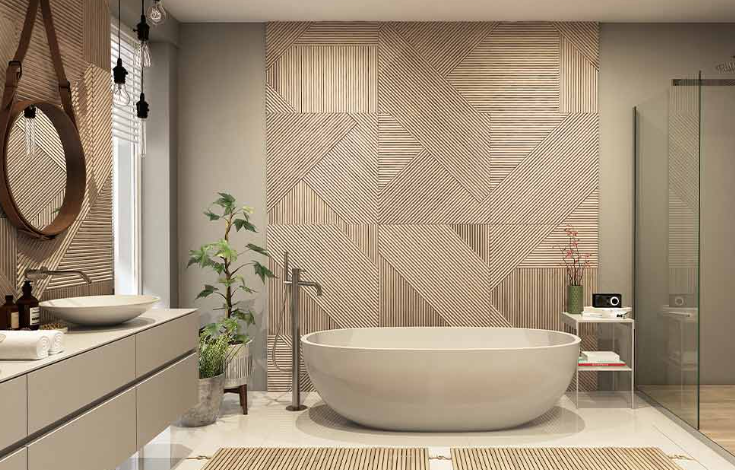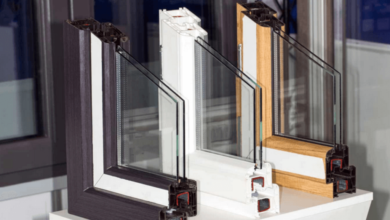How to Choose the Perfect Tile Pattern and Texture for Your Shower

Choosing the perfect tile pattern and texture for your shower is a critical step in creating a beautiful and functional bathroom. The right tiles can elevate an everyday space into a standout sanctuary, providing a unique sense of personality while serving essential practical purposes. Thoughtful selection can completely transform your shower space, setting the tone for the entire room and offering practical advantages for daily use. Whether starting from scratch or planning a renovation, investing time in choosing the right tiles ensures you make a lasting impact. Modern materials and innovative designs mean showers can reflect nearly any mood or style, ranging from sleek minimalism to lush retreats. If you want a professional approach to upgrading your bathroom, consider exploring shower remodeling options to maximize style and function. A well-chosen tile enhances visual appeal and improves durability and ease of maintenance over time.
Understanding Tile Patterns
The pattern you choose for your shower tiles establishes your bathroom’s foundational look and feel. Patterns can direct the eye, make a space appear larger or cozier, and serve as the backdrop to your entire shower experience. Each pattern offers a distinct way to enhance space, create movement, or provide subtle elegance. Some designs lean toward tradition, others make bold statements, and others prioritize maximum functionality.
- Classic Subway Pattern: This design features rectangular tiles in an offset, brick-like arrangement, providing a clean and timeless look. Its symmetry and repetition impart a sense of order, and subway tiles in glossy finishes reflect light beautifully to brighten any bathroom. It’s a favorite for traditional and contemporary bathrooms; its horizontal lines can visually expand small spaces.
- Herringbone Pattern: The pattern injects dynamic movement and refinement by arranging tiles in a zigzag or V-shape. This visually stimulating style suits modern and classic bathrooms, helping draw the eye upward or along the length of the shower. Herringbone can also disguise uneven surfaces and add intricate appeal.
- Chevron Pattern: Similar to herringbone but with a sharper, continuous zigzag where tiles meet at points, the chevron pattern adds a striking, contemporary twist to any shower. Chevron tiles create a bold statement, sometimes used on feature walls or niches to add instant drama and sophistication.
- Basket Weave Pattern: This classic pattern uses rectangular tiles to create a woven effect, giving the shower a vintage and intricate appearance. It works best in smaller areas where the detail won’t overwhelm the space, perfect for adding a touch of historic flair or charming detail to an alcove or accent wall.
- Large-Format Tiles: These tiles reduce grout lines, producing a seamless and modern finish while making the space feel larger and easier to clean. Large tiles suit contemporary styles and busy households, providing aesthetic value and practicality.
- Penny Tiles: Small, round tiles evoke retro charm and offer superior slip-resistance thanks to their many grout lines – excellent for shower floors. Their playful shapes and broad color variety create both visual and functional interest.
[suggestion]Simple image of a modern shower with a mix of different tile patterns and textures, such as subway tiles on the walls and penny tiles on the shower floor.[/suggestion]
Exploring Tile Textures
Texture brings tactile and visual interest to your shower. It can make a space feel more inviting, offer enhanced safety, or create striking visual contrasts. Choosing the right texture can enhance slip resistance, evoke different moods, and create captivating focal points. Tactile finishes also help disguise water spots and soap residue, keeping your shower looking cleaner between deep cleans.
See also: How to Start Making Passive Income from Home with Online Earning
- Textured Wall Tiles: These feature raised or intricate patterns that catch light and create mesmerizing effects, perfect for accent walls. Patterns can mimic waves, geometric lines, or floral motifs, adding a subtle layer of luxury without overpowering your design.
- Natural Stone Tiles: Options like marble, slate, or travertine not only feel organic but also introduce warmth and authenticity to your shower. Naturally slip-resistant, stone tiles are timeless and coordinate well with both earthy palettes and modern metallic finishes.
- 3D Tiles: Designed to project from the wall, 3D tiles provide a high-impact sculptural element and unique visual texture. They can transform a plain space into something extraordinary, serving as both an artistic feature and a focal point.
- Wood-Look Tiles: Modern porcelain and ceramic tiles can convincingly replicate the appearance of wood, offering a cozy, spa-like atmosphere with the durability of tile. These options allow you to combine rustic charm with resistance to moisture, a perfect blend for the shower environment.
Factors to Consider When Choosing Tiles
To make the best decisions on pattern and texture, consider your shower tiles’ practical aspects and visual appeal. Thinking about your household’s routines and future needs helps prevent regrets and ensures your investment pays off for years. From budget to daily upkeep, several variables should drive your selection process:
- Bathroom Size: Smaller baths benefit from light-colored, simple designs, which make the space appear larger. Reflective finishes and minimal grout lines enhance light and openness. Bold patterns and darker shades can be a showstopper in more spacious showers if you want to highlight certain architectural features.
- Overall Style: Ensure your tile selection fits the desired aesthetic, such as modern, rustic, classic, or eclectic. Cohesiveness with other elements—like vanities and fixtures—will make your bathroom feel intentional and harmonious.
- Maintenance: Intricate patterns with more grout lines often require more effort to keep clean. Consider ease of maintenance alongside design, especially in multi-user or high-traffic bathrooms. Larger tiles or tiles with darker grout can save time and effort in the long run.
- Slip Resistance: Safety is paramount, especially for shower floors. Look for a slip-resistant finish to help prevent falls, favoring matte or textured tiles over glossy ones in wet areas.
Incorporating Color and Texture
Color and texture are as important as pattern in crafting your shower’s atmosphere. Carefully coordinated combinations can shift the entire mood of the space without changing the footprint. They influence your bathroom’s mood, perceived size, and even comfort levels. Layering tone, texture, and color ensures your shower is functional and uniquely yours.
- Neutral Tones: Whites, grays, and beiges create space and flexibility, serving as a backdrop for accents and ensuring style longevity. Neutrals are ideal for resale value and timeless appeal, providing the perfect canvas for changing your decor with minimal effort.
- Bold Colors: Statement shades like deep blue, emerald, or even black are ideal for adding drama and a sophisticated edge. Use bold tiles as accent strips or on a single wall to create an eye-catching focal point without overwhelming the entire shower area.
- Earthy Hues: Warm browns, terracotta, and muted greens evoke a natural feel and add comfort to the room. These tones pair beautifully with organic surfaces or matte finishes for a grounded, tranquil effect.
- Textured Finishes: Concrete, linen, or wood styles bring subtle warmth and dimensionality, and they are well-suited for minimalist and modern designs. Combining contrasting textures—such as glossy and matte, or wood and stone—adds interest and depth.
Practical Tips for Tile Selection
As you hone in on your tile choices, use these practical strategies to ensure your selections suit your shower environment. Making informed decisions at every stage avoids costly changes and ensures your new shower surpasses both aesthetic and functional expectations:
- Test Samples: Always view tile samples in your actual bathroom. Lighting can dramatically alter the impact of color and texture. Check the samples in different light at various times of day to see how the color and sheen complement your space.
- Mix and Match: Don’t be afraid to blend patterns and finishes. However, balance is key—too many textures or colors may overwhelm rather than enhance. Creating a visual hierarchy—like placing patterned or bold tiles below eye level—ensures a pleasing result.
- Grout Choices: Grout color affects both aesthetics and cleanliness. Matching grout to tiles gives a continuous look; contrasting grout highlights the pattern and camouflages discoloration over time.
- Professional Advice: For personalized results, consult an interior designer or specialized contractor who can help navigate the wide array of tile options, layouts, and finishes tailored to your needs. Their expertise can save time, minimize waste, and ensure the finished product matches your vision.
By considering aesthetics and practicalities, you can confidently select patterns and textures that create a harmonious, safe, and striking shower environment. Remember, thoughtful planning and selecting quality materials will lead to a bathroom upgrade that continues to satisfy for years. Your shower can become a personal retreat that elevates your daily routine and impresses guests alike, all while offering enduring durability and beauty.

